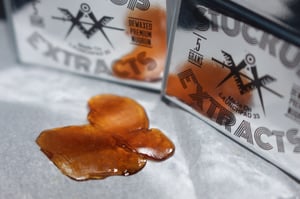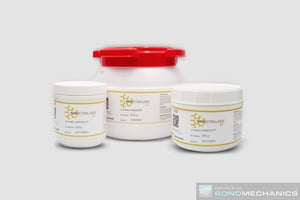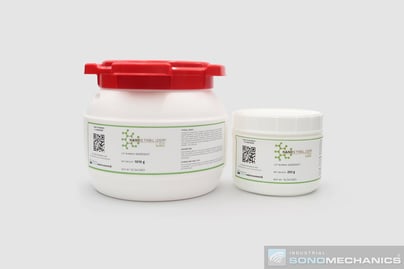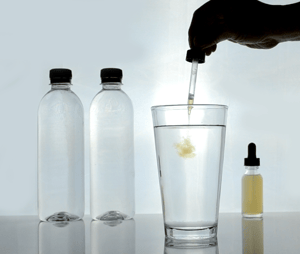 We are frequently asked how to minimize the bitter taste of products made with cannabis extract nanoemulsions (a.k.a., water-soluble CBD and THC). Infusing beverages with CBD and/or THC-containing translucent nanoemulsions (ideally, averaging ~20 nanometers in droplet size diameter) offers a very convenient, discrete and effective consumption method. The infusion does not change the original appearance of the beverages while instantly enabling them to provide a very rapid onset of action and high bioavailability of cannabinoids as well as of any other incorporated active ingredients. With this pharmacokinetic profile, the experience a lot more similar to consuming an alcoholic beverage than a typical cannabis-containing edible, which provides a myriad of attractive options for the vendors and consumers. In many cases, however, the infusion results in a bitter taste, which can range in intensity from virtually undetectable to quite unpleasant and makes it important to understand and manage.
We are frequently asked how to minimize the bitter taste of products made with cannabis extract nanoemulsions (a.k.a., water-soluble CBD and THC). Infusing beverages with CBD and/or THC-containing translucent nanoemulsions (ideally, averaging ~20 nanometers in droplet size diameter) offers a very convenient, discrete and effective consumption method. The infusion does not change the original appearance of the beverages while instantly enabling them to provide a very rapid onset of action and high bioavailability of cannabinoids as well as of any other incorporated active ingredients. With this pharmacokinetic profile, the experience a lot more similar to consuming an alcoholic beverage than a typical cannabis-containing edible, which provides a myriad of attractive options for the vendors and consumers. In many cases, however, the infusion results in a bitter taste, which can range in intensity from virtually undetectable to quite unpleasant and makes it important to understand and manage.
Where does the bitterness come from?
1. The cannabis extract itself

Full-spectrum cannabis extracts are known to have a bitter and earthy taste. As the extracts are further refined, the intensity of the taste drops due to the removal of the bitter constituents (e.g., terpenes, flavonoids). Highly refined CBD isolates and THC distillates, for example, may not appear to be bitter at all when tasted directly. It is, however, important to remember that formulating an active ingredient as a nanoemulsion not only increases its bioavailability but also amplifies its flavor due to a tremendous increase in the surface area exposed to the taste buds.
Ways to manage: The bitterness can be minimized by removing the associated terpenes and flavonoids from the original extract as much as possible. An alternative approach is to do the opposite - leave enough terpenes and flavonoids in the extract for the bitterness to be surrounded by other flavors, resulting in a more pleasant profile. The latter approach is typical for the alcohol industry, where most beverages (e.g., whiskey, wine, beer) are not refined to the point of minimal taste. Instead, their flavor profiles are carefully developed to provide a pleasant experience.
2. The formulation
 Besides active ingredients (cannabis extracts, in this case), nanoemulsions typically incorporate carrier oils, surfactants (emulsifiers), antioxidants and preservatives, all of which can have or develop tastes of their own. Carrier oils, for example, may go rancid and become bitter and/or burnt when oxidized. Most food-grade surfactants are bitter and many have "chemical" and "soapy" flavors.
Besides active ingredients (cannabis extracts, in this case), nanoemulsions typically incorporate carrier oils, surfactants (emulsifiers), antioxidants and preservatives, all of which can have or develop tastes of their own. Carrier oils, for example, may go rancid and become bitter and/or burnt when oxidized. Most food-grade surfactants are bitter and many have "chemical" and "soapy" flavors.

Ways to manage: All non-active components of the formulation should have
We also offer a second nano-formulation - NanoStabilizer®-LSO, which has some taste masking capacity and may help with the bitterness. Additionally, the NanoStabilizer®-LSO ingredients are natural and organic and the resulting nanoemulsions can be dried directly into a water-soluble powder.

Additional ways to manage the bitterness
1. Avoid using high

2. Select beverages with compatible flavors
We find that such beverages as beer, coffee and many types of tea (especially peppermint) work best to hide the bitterness. For example, nanoemulsions made with even very "dirty" extracts cannot be tasted in most types of beer because the flavor profile of hops is similar to that of cannabis and is, generally, stronger.
3. Introduce a flavor-masking agent
Natural flavors can be added to the nanoemulsion or the finished product to mask the cannabis extract bitterness. We find that peppermint, spearmint, cinnamon, ginger, and clove essential oils generally work quite well. There are two ways of incorporating these oils into the products:

- Include the oil in the formulation, replacing some of your extract/
isolate . For example, if the process calls for 50 g of the extract/isolate, try using 40 g instead and mix in 10 g of the essential oil. When using our NanoStabilizer®-LT, the rest of the process can remain the same. Keep in mind that this will bring the potency of the nanoemulsion down by 20%, which can be compensated by increasing the dispensed amount. - Nanoemulsions are fully miscible with water and each other, so it is possible to make one from just the essential oil and independently add it to the finished product or mix it with your cannabis extract nanoemulsion. The picture on the right illustrates a full-spectrum CBD oil nanoemulsion (left) and a peppermint oil nanoemulsion (right), both made with our BSP-1200 ultrasonic processor and NanoStabilizer®-LT. Both have a similar degree of translucency and an identical active ingredient concentration (20 mg/ml of CBD and peppermint oil, respectively). They can be mixed with each other or the finished beverage product in any desired ratio, providing the flexibility to achieve the desired degree of potency and flavor masking.
To receive an email update when a new blog post is published, please subscribe here:
.jpg?width=1994&height=332&name=Logo%20Sonomechanics%20White%20No%20Shadow%20R_Final%20(1).jpg)


